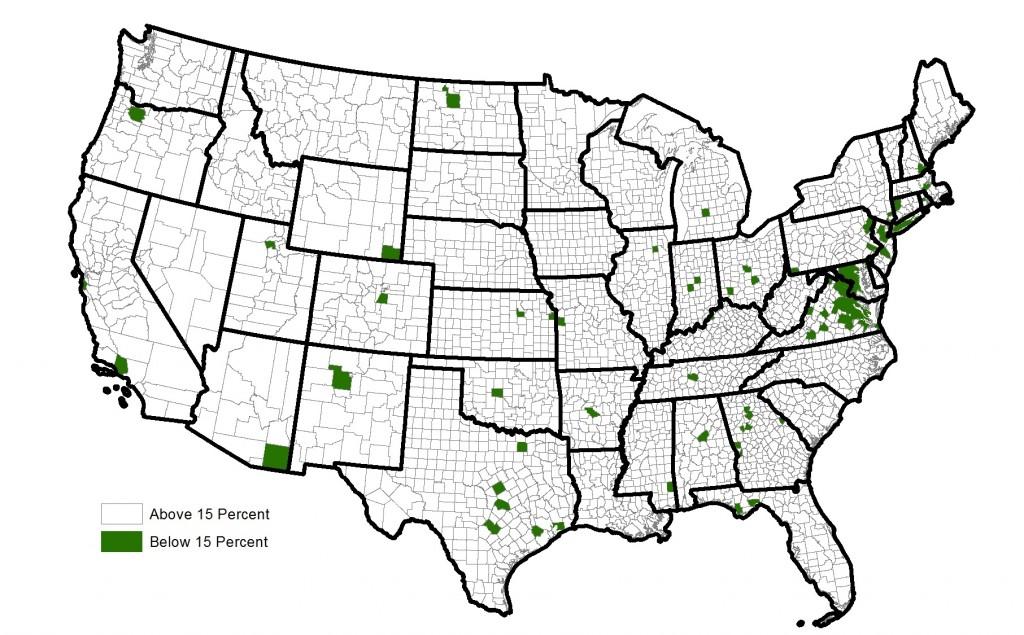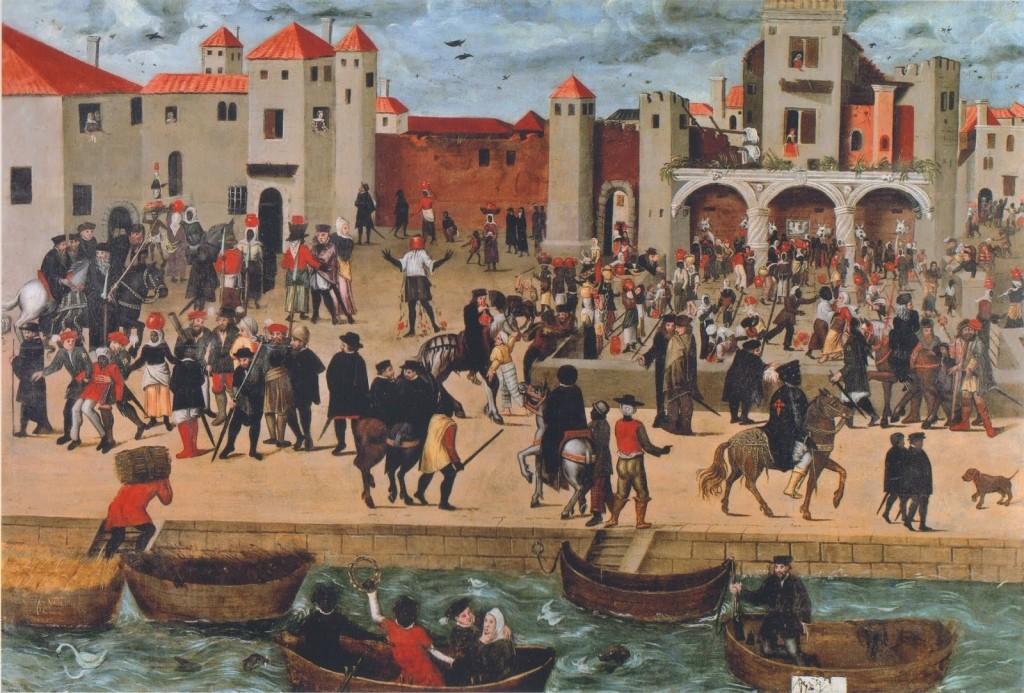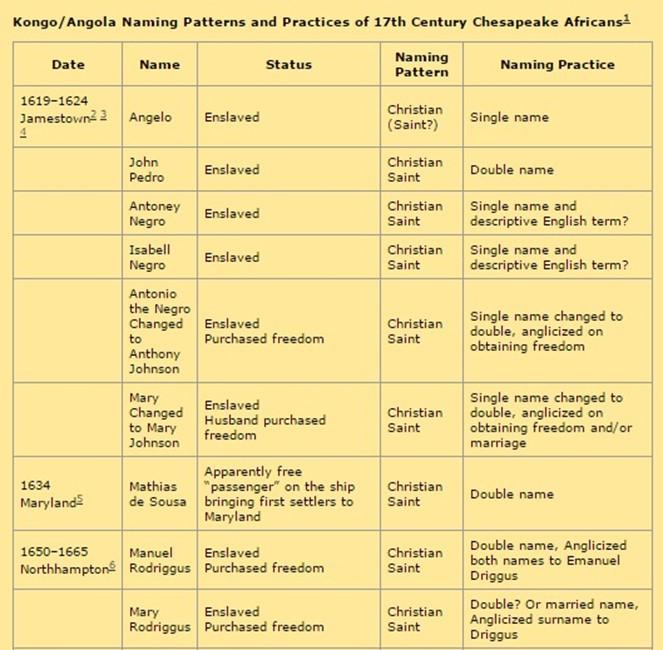Why are Black households wealthier in Virginia?
Black households earn more in mid-Atlantic states, particularly in Virginia, than in any other state where Blacks make up a substantial portion of the population. As the previous post noted, neither the region’s overall wealth nor the concentration of federal government jobs in mid-Atlantic states fully accounts for why higher income Black households are disproportionately located in the region. This post explores an alternative explanation by looking into Virginia and mid-Atlantic history.
William Faulkner famously wrote that “the past is never dead, it’s not even past.” Past acts, he argued, continue to resonate in and shape the present. A number of social scientists have found that income and educational attainment is in large part intergenerational, that is, parents’ and grandparents’ socioeconomic status is one of the best determinants of the economic well-being of their children and grandchildren. Beyond the level of the individual or family, Bureau of Economic Analysis data also shows that it usually takes generations for the income per person in one state to change considerably when compared with other states, suggesting that patterns of economic wealth (or deprivation) have both historic roots and predictive value..

Data is from the Census 2014 American Community Survey, counties with small Black populations and large margins of error were excluded. The national poverty rate in 2014 was 15 percent.
Black wealth in the Jim Crow-Era
The large-scale migration of Blacks from the rural South to cities in the 20th century makes it difficult to compare census income data for specific geographic areas over time, but there are indicators in the 1940 census that many mid-Atlantic Black households already were wealthier than those in the rest of the country. Homeownership rates for Blacks in 1940 were noticeably high in Virginia at a time when the federal government openly restricted mortgages for Black households. Similarly, two decades earlier, the 1920 census showed that Virginia’s Black farm ownership rate was also considerably higher in a period when a quarter of the population still worked in agriculture.

Data is from the 1940 Decennial Census
Part of the differences in current day Black households seen in Virginia, Maryland, and Delaware may be a result of the relative absence of the practice of sharecropping in these states compared to the rest of the South after the Civil War. Outside of Southside Virginia, the lack of a staple crop, such as tobacco or cotton, meant sharecropping was less practical and that fewer Blacks and Whites were trapped in the intergenerational cycle of poverty often the result of sharecropping. Instead, farmers in the mid-Atlantic usually diversified into truck or dairy farming which also better supported them during economic downturns.

Data is from the 1920 Decennial Census
Despite relative economic advantages, life for Blacks in Virginia was hard during the period of Jim Crow laws. In 1902, Virginia, following the example of other states, attempted to use a poll tax as well as a written literacy requirement to disenfranchise Black Virginians. Allan Braxton, who served on the 1902 Constitution’s suffrage committee, correctly predicted at the time that Virginia’s laws would not be as effective because Blacks in Virginia were often wealthy enough to pay the poll tax, and educated enough to meet the literacy requirement. The fact that the poll tax and literacy requirements proved to be not as effective in Virginia raises the question: why were Blacks in Virginia often wealthier and better educated than in the rest of the South fewer than 40 years after emancipation?
The evolution of American slavery
While in most of the South there were few free Blacks before the 13th Amendment in 1865, free Blacks commonly made up a quarter or more of the free population in the counties of Eastern Virginia, Maryland, and Delaware. Despite federal and state laws gradually removing their rights in the mid-1800s, free Blacks had far more opportunities than most enslaved Blacks, often owning farms and businesses and sometimes working as teachers or serving in government positions. In 1800, John Chavis, a resident of Mecklenburg County, Virginia, graduated from what is now Washington & Lee University in Lexington, Virginia becoming the first known African American to earn a degree from a U.S. university.

Data is from the 1860 Decennial Census. The percentages are the portion of the free population that was Black
The first U.S. census in 1790 shows that free Blacks already had a considerable presence in the mid-Atlantic. In most cases, the ancestors of free Blacks were never enslaved in the same way that most Blacks were before the Civil War. The majority of the first Africans brought to Virginia during the early to mid-1600s were prisoners captured in wars that were taking place in what is now Angola. The region around Angola had been under Portuguese influence since the 1400s, and by the 1600s the largest kingdom was officially Roman Catholic with several major cities and extensive commerce. Possibly because they were Christian, but also because English common law explicitly banned slavery, the first Africans in Virginia appear to have been enslaved in the same way that indentured servants from Britain and Ireland were–being bought and forced to work for a set amount of years (often seven) before gaining their freedom. After earning their freedom in the mid-Atlantic colonies, many African colonists prospered, purchasing land and indentured servants, as well as inter-marrying with other residents of the colonies.

As settlement in Virginia pushed further inland and southward from the Chesapeake Bay during the late 1600s, the demand for labor increasingly outpaced the supply. To supply additional workers, the Virginia House of Burgesses had, by 1705, codified a system of forced labor specifically for non-Europeans and non-Christians that resembled the form of slavery common in the U.S. before the 13th amendment. Meanwhile, as most Africans were now being bought from western Africa, instead of Angola, and were less likely to be Christian, or westernized, they were less likely to enter the new nation with any status other than as slaves.

The chart is from the National Park Service’s ethnographic study of Africans in the Chesapeake Bay region.
From the early 1700s until 1865, America had two different Black populations; one free and one enslaved. Even after 1865, during the Jim Crow era, Black residents of areas that formerly had large free populations often fared better than in the rest of the country. While the higher income of Black Virginian’s today is not necessarily correlated with Virginia having a large free population in the past, historic data shows there is a strong continuity between Black Virginians’ past and present wealth. If Black Virginians are wealthier today in part because of actions taken centuries ago, it sheds light on a difficult question: How many Black households in Virginia and the rest of the country are poorer today in part because of centuries-old laws and actions?
If you would like to read more about this topic I would recommend following the links embedded in the post and also looking at these books:
A Cultural History of the Atlantic World 1250-1820, Thornton
Rough Crossings: Britain, the Slaves and the American Revolution, Schama
The Promise of the New South, Ayers


